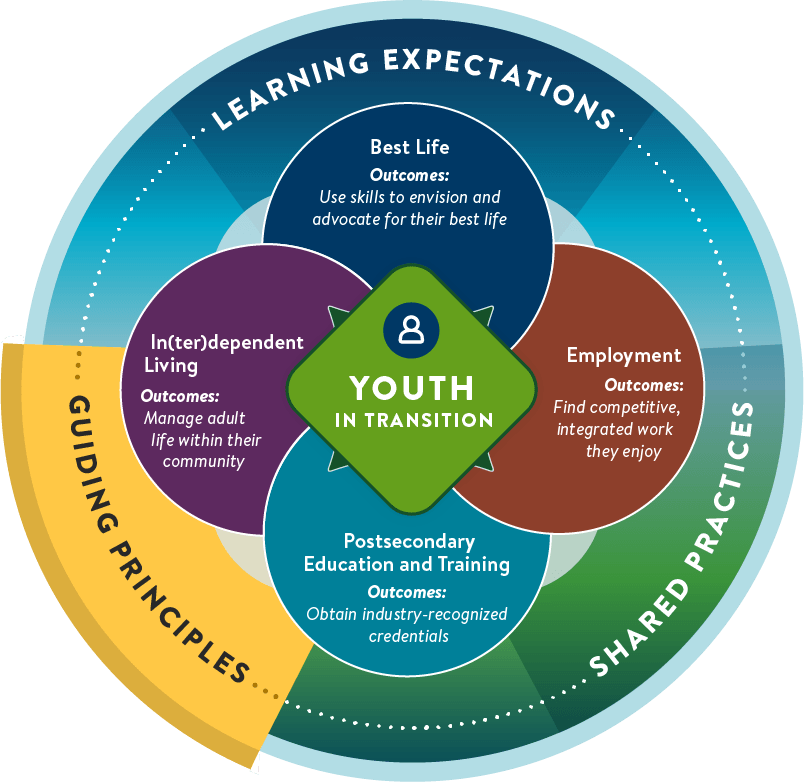 The Framework’s guiding principles are the beliefs that guide decisions at the system, agency and professional level. They serve as the foundation for what we do and how we do it.
The Framework’s guiding principles are the beliefs that guide decisions at the system, agency and professional level. They serve as the foundation for what we do and how we do it.
The Framework’s guiding principles are:
1. The youth is at the center of transition planning.
2. Families play a key role in successful transition outcomes.
3. Transition planning should start early in a youth’s life.
4. High expectations matter.
5. Strong partnerships support a smoother transition to adulthood.
6. Success is measured by improved youth outcomes.






